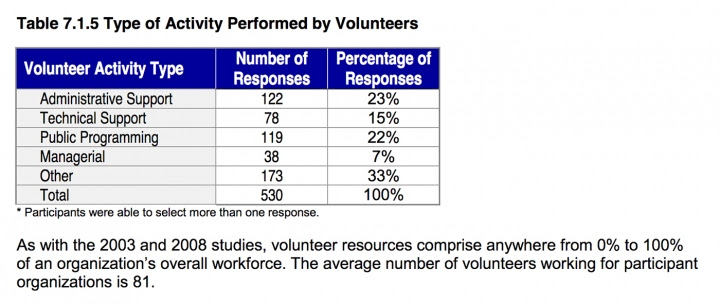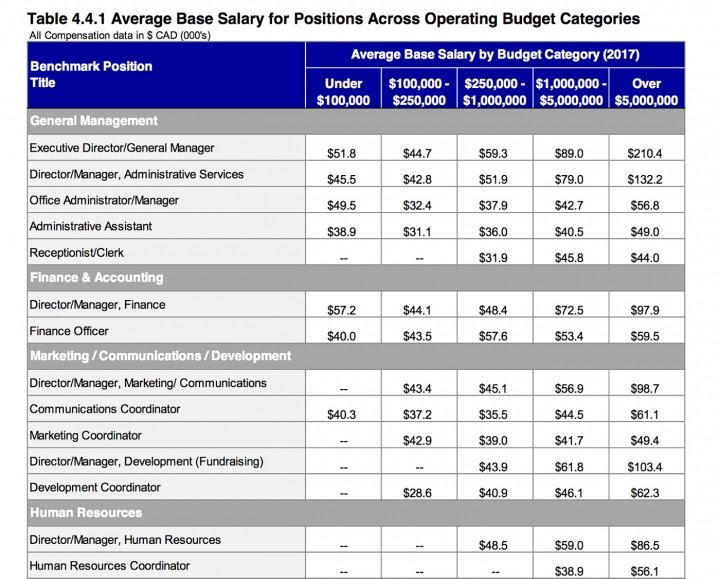The study, the first of its kind in nearly a decade, found that arts worker salaries had barely grown at all while smaller organizations in particularly struggled to offer their employees benefits.

It’s tough out there for arts workers. (image by the author for Hyperallergic)
As most professionals in the arts sector know, love of the game can be one of the only benefits. As reported by the Canadian Art Foundation, a recent study performed by the Canada Council for the Arts and the Department of Canadian Heritage, dubbed the “2017 National Compensation Study – For Managerial and Administrative Positions in Not-for-Profit Arts Organizations” — which followed up on data last collected for a 2008 survey — revealed very little in the way of salary growth within Canada’s professional arts sector, and an attendant shrinking of benefits, especially retirement savings plans.
The study polls 426 organizations in the not-for-profit cultural sector in Canada, measured across 21 benchmarks, including wage increases, base salaries for top-tier executives, benefits, human resource priorities, and others. Results not only showed repressed growth in arts sector wages relative to the 2008 study, but found the arts lagging behind other sectors in terms of the compensation, long-term benefits, and subsequent retention of employees.
(all images derived from 2017 National Compensation Study – For Managerial and Administrative Positions in Not-for-Profit Arts Organizations unless indicated otherwise)
For example, the average employee turnover rate for arts sector workers in 2017 was calculated to be 13.3% — and though this represented a decrease from a staggering 20.3% in 2008, it is still nearly twice as high as the all-industry average of 7.1%. Smaller non-profit arts organizations (considered to be those with an annual operating budget under $1 million Canadian dollars) found that employees were routinely expected to take on a wider variety of functions to meet their organizational goals, often combining the responsibilities of multiple roles into a single position. Unable to offer competitive salaries or benefits — three-to-five times lower than those offered by organizations with annual operating budgets over $5 million — these small and mid-sized organizations often compensate with alternative methods to attract and retain staff.
“For example, 73% of organizations with operating budgets under $1,000,000 offer flexible work arrangements,” said the study. “This issue remains significant in an industry where the vast majority of organizations have operating budgets under $1,000,000.” This study was first performed in 2003, due to a growing sense of urgency in the not-for-profit arts sector, as a generation of arts managers and leaders were leaving the workforce and “the question of succession loomed large.”

A table from the 2017 National Compensation Study – For Managerial and Administrative Positions in Not-for-Profit Arts Organizations
One implication not explicitly examined by the study is the interrelationship between a sector that demonstrates very little potential for salary and wage growth, while demanding increasingly expensive post-graduate credentials from its candidates — even in Canada, where the cost of higher education is much lower compared to the United States. Top-tier arts sector workers are often tacitly expected to hold MAs and MFAs — and now, perhaps even PhDs — creating an opening for crippling student loan debt in a field with less potential to put employees in a position to pay off those loans and justify the expense of their qualifying education.

A table from the 2017 National Compensation Study – For Managerial and Administrative Positions in Not-for-Profit Arts Organizations
Certain study findings followed logical disparities between small and large organizations, for examples that larger orgs were two to three times more likely to offer a comprehensive benefits package than smaller ones (which were more likely to offer limited benefits or none at all). These findings remained consistent with the study results from 2003 and 2008, but are wildly out of step with the general scope of Canada’s other sectors — according to Mercer’s 2017 Worldwide Benefit and Employment Guidelines, 85–95% of Canadian companies provide health-related benefits.

A table from the 2017 National Compensation Study – For Managerial and Administrative Positions in Not-for-Profit Arts Organizations
This study provides yet more evidence in the ongoing effort to collect data on disparities in and among arts sector workers, creating an official record that reveals an international industry rife with issues of unfair compensation and representation. One must question if there are prevalent underlying concepts about the nature of art, its role in society, and its advancement and preservation, that enable the continued disregard of the need for job security and financial stability among its workforce. As organizations including Creative Capital and Creative Many work tirelessly to prove, arts sector work is significant to the economic health of advanced nations. One has to wonder how many studies must be conducted before sweeping change will come to an industry that continues to hold little material allure beyond the opportunity to “do what you love” for a living.
The entire “2017 National Compensation Study – For Managerial and Administrative Positions in Not-for-Profit Arts Organizations” is available from the Cultural Human Resources Council.




